Hexahedral Meshing of ONERA M6 Wing Using ICEMCFD (Part 2)
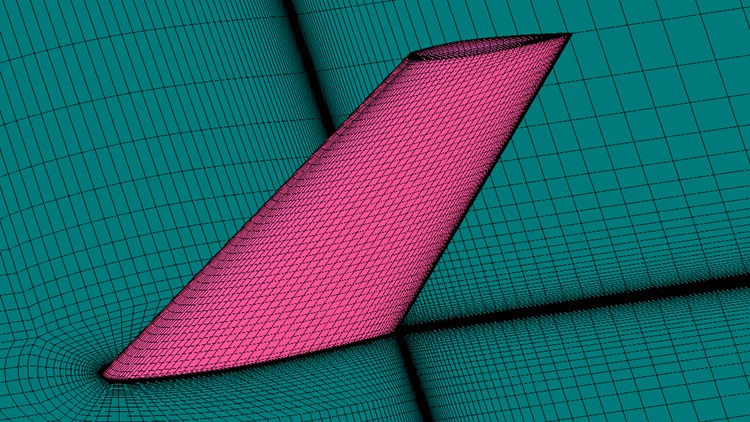
Why take this course?
🪙 Master Hexa Meshing for ONERA M6 Wing in CFD Analysis - Part 2
🚀 Course Overview: Welcome to the second part of our comprehensive course on Computational Fluid Dynamics (CFD) analysis of the ONERA M6 wing! In this series, we will delve deep into the art of creating a high-quality hexahedral mesh for this iconic test case. If you haven't checked out Part 1 where we constructed the geometry of the ONERA M6 wing in Solidworks, make sure to do so as it sets the foundation for our current task.
🏛️ Course Structure:
-
Geometry Generation & Meshing: We'll start by utilizing the existing ONERA M6 wing geometry from Solidworks to build our grid. This wing is a classical test case for CFD validation, known for its complex flow features like transonic flows with shocks and boundary layer separation.
-
CFD Analysis Framework: This three-part series will guide you through the entire process of conducting a CFD analysis as per the data provided in the AGARD AR 138 1979 by Schmitt, V. and F. Charpin.
🎯 Learning Outcomes: By the end of this course, you will:
- Be proficient in performing CFD simulations for external, viscous, compressible flows around a 3D geometry at transonic conditions using various turbulence models and appropriate boundary layer thicknesses.
- Understand all processes involved in high-fidelity CFD analysis, including geometry creation, meshing, CFD setup, solution, and post-processing.
- Validate your CFD results against experimental data from the AGARD report.
🛠️ Course Content & Techniques:
- Geometry generation in Solidworks ✅
- Setting up a hemisphere domain in Spaceclaim ✅
- Performing hexahedral meshing with ICEM CFD ✅
- Importing the mesh, specifying boundary conditions, defining material properties, setting up solver parameters, and configuring report definitions ✅
- Exploring steady-state, 3D Reynolds-Averaged Navier-Stokes (RANS) analysis ✅
- Applying turbulence models such as Spalart-Allmaras, K-Epislon, and Shear Stress Transport SST, with options for transition modeling ✅
- Utilizing a second-order upwind flow scheme ✅
- Working with a compressible, implicit solver ✅
- Implementing no-slip wall conditions, symmetry planes, and pressure far-field boundaries ✅
- Accelerating convergence using the latest Fluent 2022 R1 options ✅
- Running parallel computations ✅
- Post-processing results for comprehensive analysis ✅
- Validating findings against experimental data ✅
- Assessing solution convergence based on lift and drag coefficients ✅
📚 Resources Included:
- All PPT slides for a detailed learning experience.
- The AGARD Report for precise experimental data comparison.
- A complete suite of files, including the geometry, domain, hexa mesh, solved case, data files, an Excel file for data analysis, and NASA's wing geometry for reference.
🔧 Problem Setup: This problem will focus on solving the flow past the ONERA M6 wing with the following conditions:
- Freestream Temperature = 288.15 K
- Freestream Mach number = 0.8395
- Angle of attack (AOA) = 3.06 degrees
- Reynolds number = 11.72E6
- Mean aerodynamic chord = 0.64607 m
Join us in this enlightening journey through the world of CFD analysis with the ONERA M6 wing. Let's transform your skills and knowledge to achieve the most accurate and precise results in the field of computational fluid dynamics! 🚀💦⚫️
Course Gallery
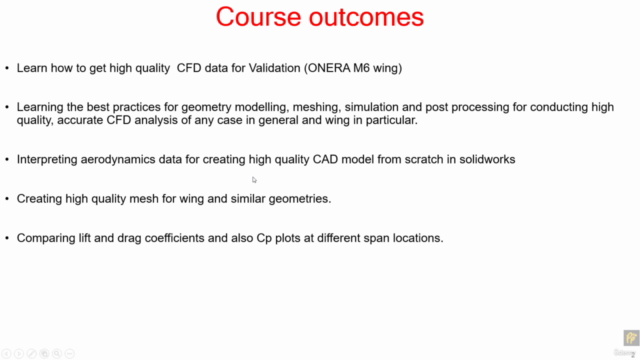
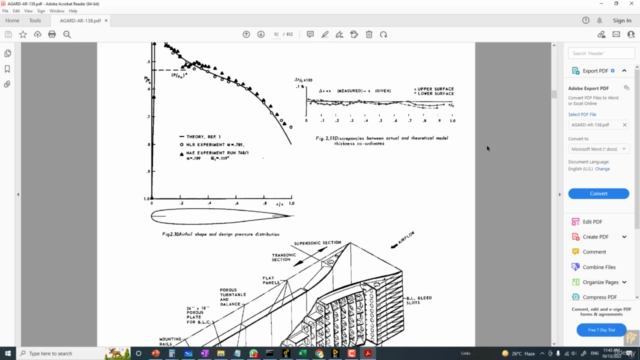
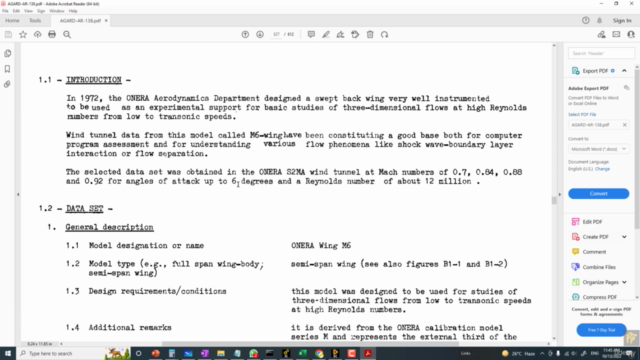
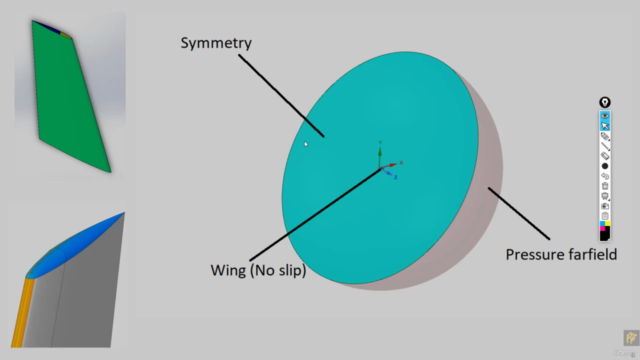
Loading charts...